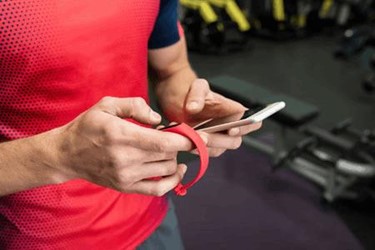Imagine A Fitbit-Like Field Service Experience
By Bruce Breeden, President, Field Service Resources, LLC

It’s the New Year, and gyms are packed full with people full of resolve to get healthy. Many of those people, including myself, now use an exercise-tracking device like a Fitbit, Garmin, or Apple Watch to track their activity and help stay motivated. The question is, what can we in the field service industry learn from the use of these exercise-tracking devices?
It amazes me how much more engaged I am with my goals, performance, and competition just because I have a little device strapped to my wrist. It knows my goals, my weight, my height, and medical concerns to make its tracking throughout the day productive and interesting. Although while trapped in seat 12C from Charlotte to Kansas City, the American Airlines flight attendants were not humored when Fitbit told me to get up and take him for a walk.
We often talk about the famous “e” word — engagement — as a key to achieving results and successfully utilizing our technology and people to maximize business performance. My field service organization does a great job of leading by engagement, but as we design new mobile solutions, maybe there’s an even more effective way. Let’s look at Fitbit as an example:
- Multi-platform operation; iOS, Android, and native capability for location tracking; configurable to my goals and exercise preferences
- Wrist device synced with my smartphone to track progress against my daily goals
- As I participate in goal-setting, my goals can be updated and changed
- The goals are well-balanced; exercise, eating, drinking, relaxing, and sleep
- The device is mobile, and I can connect and configure 24/7 on either the device itself or my smartphone/laptop
- Fitbit celebrates wins and achievement against my goals: it’s fun to feel your wrist vibrate and fireworks go off on the display as I accomplish them
- I get short reminders for me to do an activity
- Other so called “pushes” are supportive and assertive
- My tracking report shows trends, charts, and provides explanations on key things I may not be trained on, like sleep stages, in a brief and direct manner
- I can share my data and work as a team to keep me on track, motivated, and engaged, just like my teammates can
If you’re wondering, I don’t work for Fitbit! I just believe we as service leaders could “think” like a Fitbit to better engage our people and configure our mobile solutions.
The similarities abound with Fitbit and how to lead our service businesses using technology: balanced technician goals, engaging, goal-oriented, individual and team metrics, tracking/reports, supportive, and providing recognition. Additionally, with the merging of Millennials and Boomers in our workforce, technology is an important bridge for knowledge transfer, as well as blending personality types and learning styles.
I find Fitbit addresses well these major areas that field service should always address:
- Engagement based on participatory, realistic, and both individual and team goals
- Fun and personalized (field service is loaded with pressure, we can add humor in our day)
- Gamified
- Provides prompts to take action and educates me on various topics
- Recognizes progress and achievement
One thing I’ve found it doesn’t do that field service should consider is real-time feedback. What if our mobile platform allowed each major service task to have a feedback loop? For example, a technician is assigned to calibrate a specific model. The dispatch system correctly dispatched the technician based on completing her calibration training and her test equipment/standards are also within calibration. It very well may be that this technician, while trained, hasn’t last completed a calibration on this specific product in some time and is rusty or uncertain on how to do the task. Upon dispatch or at call closure, she could provide some simple feedback on requested training, documentation, or job aide to improve the experience next time. The assigned technical specialist or supervisor could easily collect this feedback and call data to plan micro-training events while the technician feels like the organization is there to support her and provide real-time adjustments.
I really like the small nudges from Fitbit. While writing this article, I was nudged to get up and walk around. What if we nudged our technicians on certain soft skills — providing the customer a summary report on their equipment condition and recommendations on how to reduce downtime or save costs?
As I look to enhance my field service organization’s engagement practices and mobile platform, a simple flick of the wrist reminds me what an opportunity we have to continue to develop and configure technology as a tool to improve engagement, teamwork, and performance in a changing field service industry.
Bruce Breeden is the author of the Intentional Field Service Engineer, speaker and creator of the Field Service7℠ service development program. His company website is www.fieldserviceresources.com and he can be reached at bbreeden@fieldserviceresources.com
